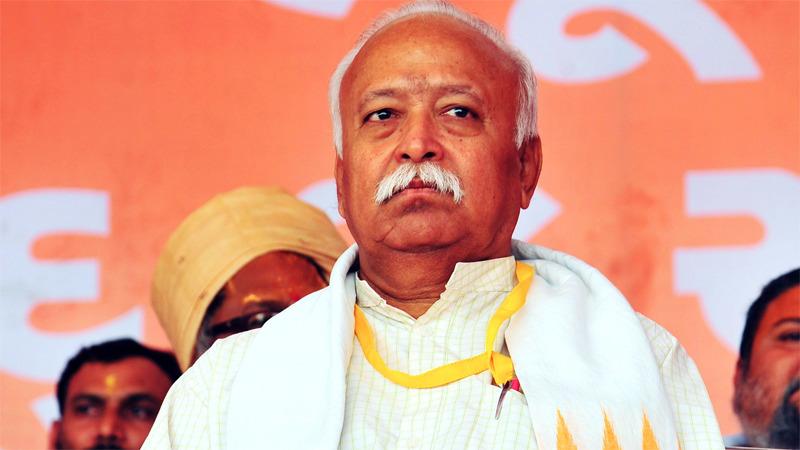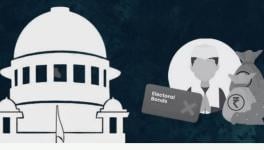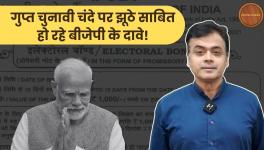Media Coverage of Mohan Bhagwat Speech Fails Test of Truth

The Hutchins Commission, or the Commission on Freedom of the Press, was constituted in the United States in 1942, to guide the media on the role it should play in a modern democracy. The Commission’s report, published in March 1947, warned against journalistic accounts that were “factually accurate but substantially untrue”.
Seemingly contradictory, Sean Illing, in a piece for the Vox website, asked Tom Rosenstiel, a media scholar and the executive director of the American Press Institute, to illustrate what the Commission meant through an example. Rosenstiel replied, “If I quote Neo-Nazis saying a bunch of stuff that is technically accurate (meaning they actually said it), but a total distortion of reality, then I’ve quoted them accurately telling their lies. A strictly factual journalism can muddy the truth, in other words.”
Rosenstiel’s reply underscores why the national media was at fault for reporting verbatim Rashtriya Swayamsevak Sangh chief Mohan Bhagwat’s Vijayadashmi speech, without questioning the veracity of some of his claims. In that speech, Bhagwat articulated, in the main, the philosophy of Hindutva, but he also, to quote Rosenstiel, muddied the truth on three counts—the Citizenship Amendment Act, the existence of a malevolent “tukde-tukde” gang, and the India-China tension in Ladakh.
Bhagwat said the CAA was not designed against any religious community, but the opponents of the new law “misled our Muslim brothers” by portraying that its aim was reduce their population in India. “Opportunists took advantage of this delicate situation by unleashing organised violence and causing social unrest in the name of protests,” Bhagwat said. He also accused the opportunists of trying to reignite that conflict. Their efforts, he said, had not made an impact on the collective consciousness because of the overwhelming nature of the media’s focus on Covid-19.
Problems with Bhagwat’s claims
The truth regarding the CAA was at variance with Bhagwat’s portrayal of it. A chain of Bharatiya Janata Party leaders, including Home Minister Amit Shah, repeatedly said that the CAA was a precursor to the preparation of the National Register of Citizens. At that stage, according to them, non-Muslim migrants would enjoy protection under the CAA, but the “infiltrators”, a term signifying the Bangladeshi Muslim, would be thrown out. It was precisely why the CAA fanned anxiety among Muslims, who took to the streets to protest against the new citizenship law.
There is also ample evidence to show that the “opportunists” who unleashed “organised violence” belonged to the BJP. Only, the Delhi Police, which reports to the central government, have charge-sheeted 15 anti-CAA protesters of conspiring to foment violence. The charges against them have yet to be framed by the court. Bhagwat’s assertion was without any basis, as was his claim that the “opportunists” were trying to rekindle the communal fire.
Bhagwat, in his speech, warns his audience against those who want to shatter India’s unity by creating hate among the Scheduled Castes, Scheduled Tribes and the “so-called minorities of our country”. He called such people as members of a “conspiratorial gang”, which instigates and promotes slogan like “Bharat tere tukde honge”.
It still remains an allegation of a TV channel that the slogan of “Bharat tere tukde honge” was chanted at an event in Delhi’s Jawaharlal Nehru University in 2016. Bhagwat makes it appear that the tukde-tukde gang is a real entity, formed to undermine India’s integrity and unity. Yet, in response to an application under the Right to Information Act, the Home Ministry said it had “no information concerning tukde-tukde gang”.
Bhagwat also claimed that the “Bharatiya defence forces, government and the people remained unfazed” at “China’s boisterous efforts to invade our territories” and “responded sharply to this attack”, thus stunning the neighbouring superpower. This remark was hyperbole. Bhagwat did not tell the audience that measured against India’s perception of the Line of Actual Control, we have lost an estimated 1,000 sq. km in Ladakh.
Objectivity versus truth
Media’s factual reporting of Bhagwat’s speech, featured on the front-pages of most newspapers, amplified his distortion of the reality. Truth was therefore a casualty. In an age where there are multiple sources of information, with news supplied as-it-happens, might not there be a case of changing our style of reporting speeches of leaders?
Yes, argued Sean Illing in his piece, “How Trump should change the way journalists understand ‘objectivity’”, for which he had spoken to Tom Rosenstiel, their exchange quoted in the opening paragraph of this piece. Illing wrote, “The ‘objectivity’ in particular has led to an obsession with ‘balance’ or ‘fairness’ that makes it easy for bad-faith actors to get away with pushing falsehoods.”
Journalists believe they would not pass the test of objectivity in case they do not publish a leader’s speech, particularly of one with whom they disagree. There is also the journalistic tradition of not injecting a personal view in a news report detailing that leader’s speech. This has encouraged a growing breed of populist leaders to exploit the idea of objectivity to their advantage—they deliberately engage in falsehoods, knowing that these will get reported without being flagged as fake. Such falsehoods, thus, acquire the veneer of truth and get a wide circulation.
The change in the politician-media interface had Illing to ask Rosenstiel whether objectivity should be the goal of journalists. He answered, “As news is increasingly everywhere and people can get the facts on their own from wherever they want, journalism’s responsibility goes deeper. It involves sense-making, it involves providing more context… Remaining ‘neutral’ is not the goal.” Neutrality is another name of objectivity.
Even before Illing wrote his piece, Rosenstiel had explained the origin of objectivity in journalism through a thread of 22 tweets he posted in response to Wesley Lowery’s essay, “A Reckoning over Objectivity, Led by Black Journalists”, which was published in The New York Times. Rosenstiel wrote that objectivity as a concept migrated from other fields of study to journalism in the 1920s. It was imported in recognition that it was impossible for journalists to be objective. They will have their biases.
Rosenstiel wrote, “The idea was that journalists needed to employ objective, observable, repeatable methods of verification in their reporting—precisely because they could never be personally objective. Their methods of reporting had to be objective because they never could be.” This is precisely why social sciences, for instance, invented random sampling to enable researchers to overcome personal biases.
To Illing, Rosenstiel elaborated upon his Twitter comments to describe what could be the journalistic equivalent of random sampling. He said, “There are plenty of people who can tell me what they believe without evidence, but journalism should be an evidence-based enterprise, not an opinion-based enterprise. There are lots of opinion out there that have nothing to do with journalism—that’s just speech.” And speech should not become a journalistic account.
How media should respond
But speeches of leaders are news, even those deliberately laced with falsehoods or half-truths. Such speeches pose a challenge to journalists on how they should report them: should they quote entire paragraphs without telling their readers whether the claims in them are true or false?
This problem was highlighted by Arthur S Brisbane, public editor of The New York Times, during the 2012 presidential campaign. Then Republican candidate Mitt Romney repeatedly claimed that President Barack Obama was all the time making speeches “apologising for America”, although Obama had not done that even once. This had columnist Paul Krugman, in an opinion piece, call out Romney’s lie.
Brisbane wrote, “As an Op-Ed columnist, Mr Krugman clearly has the freedom to call out what he thinks is a lie. My question for readers is: should news reporters do the same?” Brisbane quoted from a letter of a reader, who wondered, “My question is what role the paper’s hard-news coverage should play with regard to false statements—by candidates or by others.”
The letter-writer acknowledged that the New York Times did, in general, document falsehoods in separate articles. But the person also raised a philosophical point: “If the newspaper’s overarching goal is truth, oughtn’t the truth be embedded in its principal stories? In other words, if a candidate repeatedly utters an outright falsehood (I leave aside ambiguous implications), shouldn’t the Times’s coverage nail it right at the point where the article quotes it?”
That would have meant, as Brisbane pointed out, inserting into a news report on Romney’s speech a paragraph saying, more or less, “The president has never used the word ‘apologise’ in a speech about US policy or history. Any assertion that he has apologised for US actions rests on a misleading interpretation of the president’s words.”
How far the United States has come from 2012 can be seen from a story of The New York Times on American President Donald Trump’s 90-minute speech on 26 October in Wisconsin. The paper said Trump made 131 false or inaccurate statements, each marked red in the image of the text of Trump’s speech. This may not appear as objective to some, but it certainly passes the test of truth, a test Indian media failed to pass in its reporting of Bhagwat’s speech, as it has not on various occasions in its coverage of other leaders in the past. Time for us to switch to interpretative reporting.
The author is an independent journalist. The views are personal.
Get the latest reports & analysis with people's perspective on Protests, movements & deep analytical videos, discussions of the current affairs in your Telegram app. Subscribe to NewsClick's Telegram channel & get Real-Time updates on stories, as they get published on our website.
























